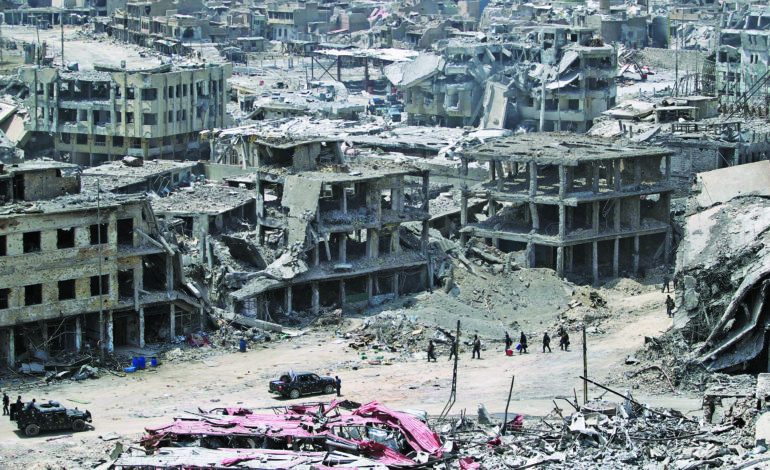GENEVA — The Iraqi city of Mosul will remain sprinkled with unexploded bombs for a decade, endangering a million or more civilians who want to return home following the end of three years of ISIS occupation, a U.N. demining expert said.
Pehr Lodhammar, a senior program manager at the U.N. Mine Action Service (UNMAS) said the destruction of Mosul had left an estimated 11 million tons of debris and two-thirds of the explosive hazards were thought to be buried under the rubble.
“We see air-dropped ammunition, 500-pound bombs that were dropped, that go 15 meters into the ground or even further. Just getting one of those pieces out is a matter of days and sometimes weeks.”
Last year, UNMAS removed 45,000 explosive hazards and 750 improvised explosive devices (IEDs) across Iraq, including over 25,000 in western Mosul alone. Other areas such as Falluja and Sinjar also need more de-mining help.
Last week de-miners discovered an ISIS factory for manufacturing improvised explosive devices littered with mortar rounds, artillery ammunition, hand grenades, rockets and 250,000 electronic components.
“It basically looked as if there had been a tornado going through an electronic store,” Lodhammar said.
Clearing buildings such as the main western Mosul hospital, formerly an ISIS headquarters site, was vital for restoring services for citizens.
“In this one location we removed over 2,500 explosive items, ranging from suicide belts, rocket propelled grenades, mortar shells, hand grenades – you name it, it was all there.”
At Mosul’s High Court, there were 44 suicide vests and belts, nine active IEDs, 64 IED switches, 231 mortar rounds, 48 rockets, 72 air dropped improvised munitions, 220 fuses and 109 grenades.
Once that was all cleared, stacks of property ownership deeds were found, a boost for returning citizens trying to prove legal ownership of their homes.
Most IEDs were based on readily available ingredients such as fertilizer, aluminum powder, diesel and “anti-lift devices” based on fridge door light switches.
They were placed in private homes or at regular intervals in “belts” up to 10 km long, with an IED every two meters, each with 10-20 kg of home-made explosives.
Some were complex, involving infra-red sensors or shaped charges that could penetrate armor.
“IEDs are not new,” Lodhammar said. “What is new is the complexity we see and the density, and the numbers, and that they have manufactured ammunition and IEDs on an industrial scale. That is new. and the fact that they have also manufactured conventional ammunition.”






Leave a Reply